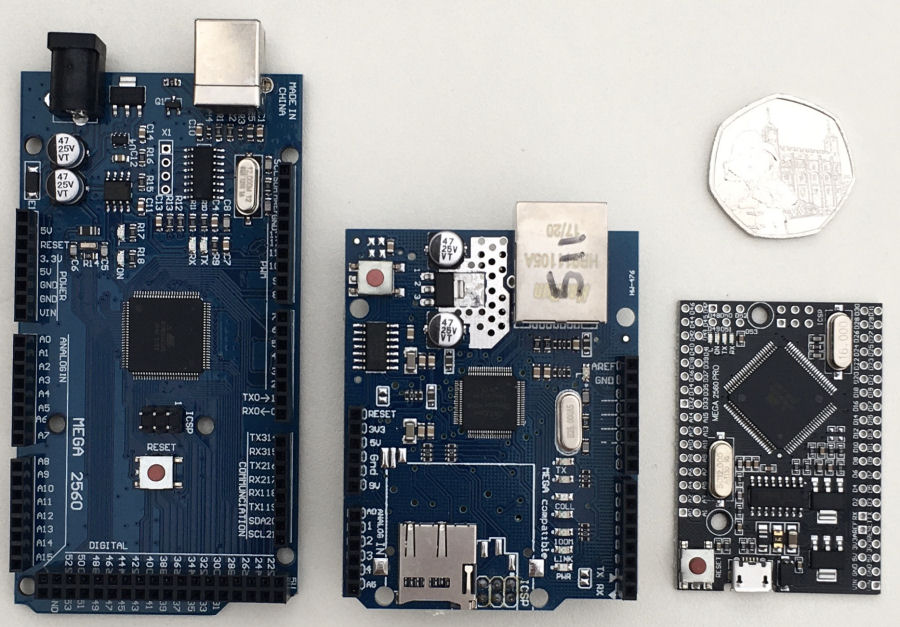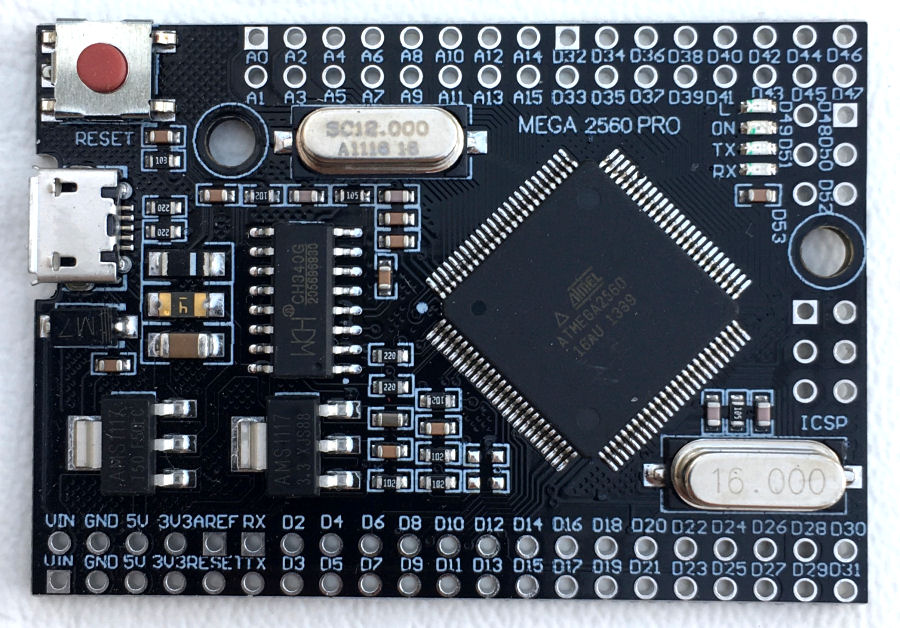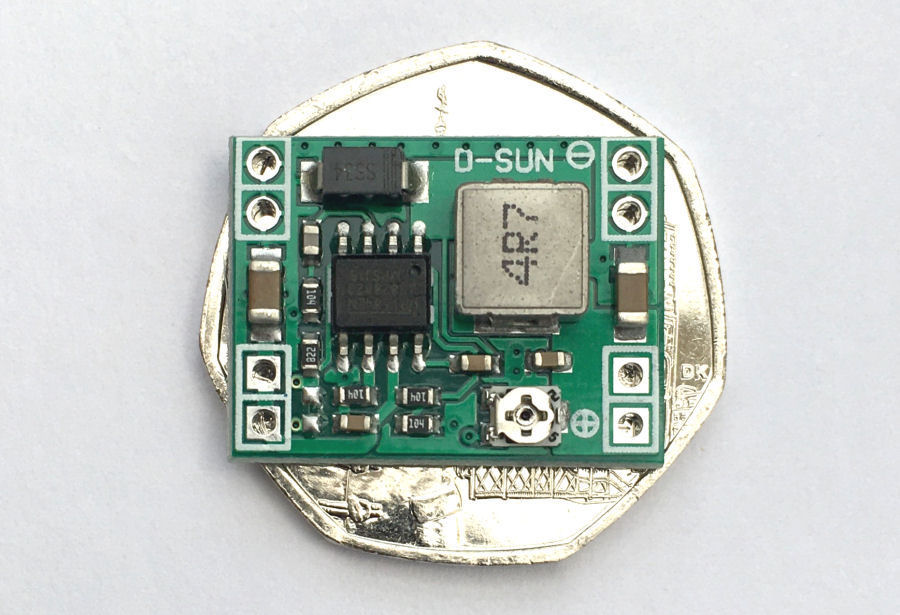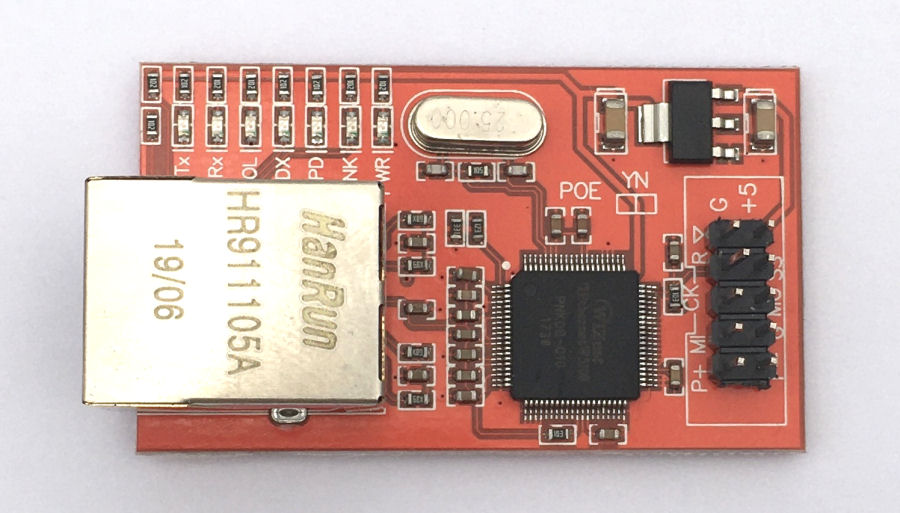Arduino Mega 2560 Pro V2 Project

I use a lot or Arduino processors in my contextual smart home. They are amazingly reliable and can be used to interface pretty much anything I want to my smart home. I have also used them as the basis of smart home locks, shower conrollers, smart curtains and other projects.
Up till now, I have focussed on using the Mega 2560 because it a lot more IO capability and memory than the Ardunio Uno. But this comes at the cot of a larger footprint. The focus of a previous project was to evaluate and integrate the Arduino Mega 2560 Pro into our contextual smart home, so that it became another one of our smart home building blocks. This is an 'embedded' version of the Mega 2560 and is much more compact. This project was really successful, so I'm now aiming to use this more compact version going forward. The Mega 2560 Pro is just 55mm × 38mm.
The objective is to create a very small, powerful, cheap, single board slave processor with Ethernet connection and lots of IO capability. The objectives are:
- Dallas 1-Wire support.
- 6 analogue inputs exposed via 4-way Molex connector.
- 8 digital IO pins exposed via 4-way Molex connector.
- 24 digital IO connections exposed via 3 10-Way DIL connectors.
- Ethernet connection and PoE support.
- I2C support exposed via a 4-way Molex connector.
Power
The board can be powered directly through the micro-USB connector, or via the Vin pin. An on-board voltage regulator typically accepts 7V to 9V dc but, will handle voltages as high as 18V dc. You can't use a 5.0V dc supply on the Vin pin because of the voltage drop across the regulators.
The maximum output current that can be drawn from the on-board 5V supply is 800mA and on 3.3V supply is also 800mA.

I typically use an adjustable dc-dc convertor to provide 5V into the 5V pin, bypassing the on-board voltage regulator. These accept a wide range of input voltages and are efficient and tiny (22mm × 17mm). They handle any voltage drops that might occur over longer power cable runs and typically I use a protected 12V dc power network around my smart home for my Arduino devices.
Power Over Ethernet (PoE)
My previous project showed that the Funduino Ethernet module simply doesn't support (non-standard) Power over Ethernet (PoE) as claimed. The focus of this project is to use a separate power supply but, I'm already looking at a fully compliant PoE solution for a later version.
Networking

I currently using these devices with a Funduino W5100 Ethernet module.
- +5 = 5V dc power
- G = Ground
- SS = This is your 'chip select'. Usually it connects to D10 on the Arduino.
- R =This is your Reset pin. It should not be connected to your Arduino.
- MO = This connects to the MOSI pin of your Arduino.
- CK = This is the clock pin and connects to the SCK pin of your Arduino.
- MI = This connects to the MISO pin of your Arduino.
- G = Ground (another one).
- P+ = Power over Ethernet (PoE).
- P- = PoE- is connected to GND on the board.
PCB Design
This is a version of the Mega 2560 that is designed to be embedded. For this reason, I am designing a bespoke PCB onto which the Mega 2560 Pro can be mounted. The goal is to replicate the functionality of many of the other boards that I've designed and had manufactured into this one single PCB which is just 80mm × 95mm.

This is the V2.0 design for my PCB. It measures 90mm ×' 63mm, which is not much bigger than an Arduino Uno.
The PCB is designed to have the dc-dc convertor and Funduino module mounted on the underside. The Mega 2560 Pro sits on the top side, along with all the connectors.
My PCB design exposes the following capabilities:
- On board 3A 5V dc-dc convertor.
- Ethernet interface.
- 8 digital IO pins exposed via 4-way Molex connector, with optional pull-up resistors.
- 8 analogue (or digital) pins exposed via 4-way Molex connector, with optional 0.1µF capacitors.
- A0 has optional 4K7Ω resistor required for 1-Wire network.
- Three 10-Way DIL connector, each exposing +5V, GND and 8 IO pins.
- On board LED with resistor to indicate errors, etc.
I like to use external pull-up resistors as it allows me to choose the best possible values for each application. It also allows me to reduce the power wasted by using high value resistors in many cases.
Testing
T.B.C.
Summary
This PCB will be my default way to deploy Arduino devices in and around my smart home. A future version will suport full Power over Ethernet (PoE) capability as well.



